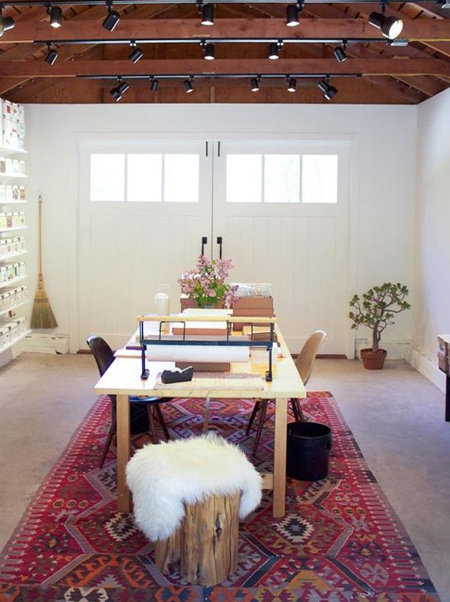Garage to guest suite
Converting a garage into a guest suite makes sense if it is standing unused or piled with junk. Whether you're looking to add an extra bedroom or a flat that you can rent out, we look at what you need to know.
Garage conversions can be simple or complex, depending on your particular project. From turning an adjacent garage into another bedroom, to adding a small kitchenette and bathroom, or even building a second storey on top of a double garage, there are numerous possibilities available.
The first thing you need to consider is the scope of your project. If you are doing additional building work, you will need to get plans approved by your city council. Bear in mind, however, that even if you are not intending to make any significant structural changes, you may be obliged to get permission to change the use of the garage, depending on the legislature for your region. If in doubt... ask your local city council or town planning for details.
GOOD TO KNOW: The general rule of thumb is that you only require permission if you have already converted one outbuilding or garage on your property, need to build a new structure, are planning to build an additional storey or change the roof structure, or if you need to put in new water joints.
A simple conversion
John Bauer from Roodepoort, converted his single garage and adjoining helper's quarters into a flat, which he is now renting out as an additional source of income. The total costs, including labour, amounted to R175 000.
The fact that the helper's quarters already had a water point meant that there was no complicated plumbing that needed to be done, and it was a simple matter of changing the garage door to a glass sliding door and building a kitchen space and bathroom with a shower inside the existing structure. There were no changes to the garage building itself.
This is more or less what Kathy did with her first garage conversion in Kloof, KwaZulu-Natal about 15 years back. She and her husband have since completed a more complicated conversion project on the South Coast. They decided to build a second storey, tie in the staff quarters, and create a full holiday flat, which they could rent out.
After drawing up preliminary plan to guide the architect, most of the construction was done themselves, which saved the couple from paying project management fees. The entire build cost about R450 000, but if they had needed to pay a contractor to project manage it, it would have been closer to R800 000.
GOOD TO KNOW: If you want to turn a garage into a double-storey, you need to check that the garage foundations are adequate. Check your plans first.
Garage to guest suite
Harry and Shirley Coetzee from Westville, Durban, who converted their garage to a guest suite, noted that it is important to think about adequate parking. They built a new garage and carport in front of the converted garage, with a courtyard in between. The garage conversion was easy, but when building the new structure they ran into trouble with storm-water drainage. The property was on a steep slope, with the house and garage near the top of the stand. During heavy rains, the water pooled up in the courtyard between the converted garage and new garage, and flooded part of the house. They had to install a French drain system to fix the problem,
Harry explains that garages are often at ground level, which is lower than the floor level of the house. House levels are usually at least one step above ground level. This often results in water coming through the sliding door that many people install in place of the garage door. It is worth considering raising the garage floor to avoid this problem.
GOOD TO KNOW: Think about the potential effects any new structures will have on your whole property.
GARAGE CONVERSION CHECKLIST
Here is a basic list of things to think about when considering a garage conversion:
◊ Get any necessary building permissions and have building plans approved, where required.
◊ Find a reputable contractor and check which elements the quotation includes / excludes.
◊ Draw up a comprehensive budget and timeframes and sign binding contracts.
◊ Consider internal doors, windows and ceilings, as well as what type of flooring you want.
◊ Decide on finishing for walls, whether plaster, painting or tile.
◊ Plan for electrical outlets and light sockets.
◊ Assess the plumbing or do you need to put in new water points / drainage lines.
◊ Will the conversion require a geyser and where will you put it.
◊ Think about security, particularly if the finished conversion will have a separate entrance.
Adapted from article in Easy DIY magazine.








